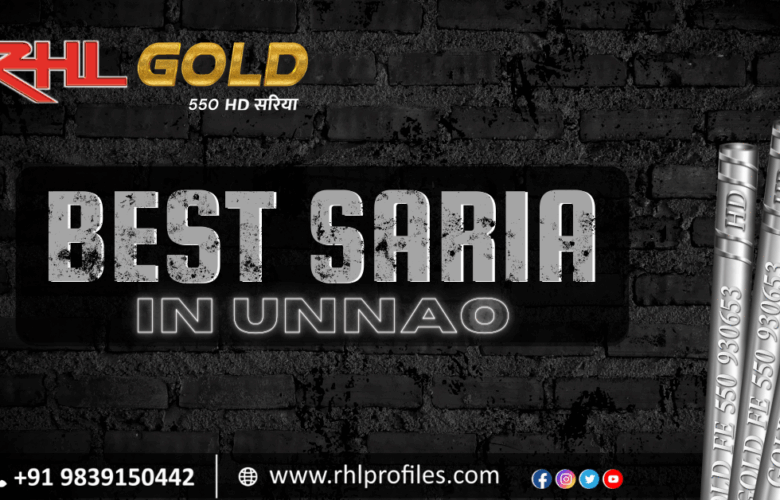- Steel Billet of appropriate chemical composition – Right raw material procurement and selection.
- Accurate rolling within close tolerances – Robust and Accurate manufacturing equipment.
- Quenching under appropriate water pressure, water temperature and water volume depending on finishing mill speed, chemical parameters, size and grade of finished steel – Trained manpower.
- Uniform atmospheric cooling on Automatic rake-type cooling bed – Right technology.
- Testing for Mechanical, Physical properties in the laboratory – Quality Assurance.
- Bundling, tagging, and dispatch as per grade and size of finished TMT Steel _ Complete customer service and satisfaction.
Properties of different grades of TMT Bars
Chemical Properties
The analysis for various grades of steel is done as per the relevant part of IS: 228 quality standards and maximum permissible %age of constituents are as below:-
| Constituent | Unit | Fe 500 | Fe 500 D | Fe 500 S |
| Carbon (C) | % Max | 0.30 | 0.25 | 0.25 |
| Carbon equivalent (CE) | % Max | 0.42 | 0.42 | 0.42 |
| Sulphur (S) | % Max | 0.055 | 0.040 | 0.040 |
| Phosphorus (P) | % Max | 0.055 | 0.040 | 0.040 |
| S + P | % Max | 0.105 | 0.075 | 0.075 |
- Where CE = C + (Mn/6)
- Where Mn stands for Manganese
Influence of different chemical ingredients in steel on properties of rebars
| S.N. | CHEMICAL CONSTITUENT | CONTROLLING PROPERTY | ACTUAL EFFECT |
| 1 | Carbon (C) | Hardness
Tensile Strength Yield Strength Weldability Brittleness
|
Higher Carbon content upto 0.30% leads to higher tensile strength, Yield Strength, Elongation etc.. However, Carbon content greater than 0.30% makes the bar brittle and unweldable. |
| 2 | Manganese (Mn) | Tensile Strength
Yield Strength Elongation Total Elongation |
Higher Manganese content increases Tensile strength, Yield Strength, Elongation and total elongation. |
| 3 | Sulphur | Present as impurity in steel which increases brittleness | Higher Sulphur content makes the bar brittle during cold twisting and brings hot shot problem during rolling |
| 4 | Phosphorus (P) | Present as an impurity which increases strength and brittleness | Higher Phosphorus content contributes to increase in strength and corrosion resistant properties but also brings brittleness to the TMT bars thereby resulting in lower life of steel. |
| 5 | Carbon Equivalent (CE) | Hardness, Tensile Strength and Weldability | This property is required to set the cooling para meters in TMT process and slight variation in Carbon equivalent may alter the physical property. Higher Carbon Equivalent > 0.42 leads to poor weldability of the TMT bars and corresponding reduction in life of teel. |
Mechanical Properties
All the test pieces are tested for it’s mechanical properties in accordance with the IS : 1608 standard read in conjunction with IS : 2062 standards.
| Properties | Unit | Fe 500 | Fe 500 D | Fe 500 S |
| Yield Stress (YS) | N/mm² min. | 500 | 500 | Min-500
Max-625 |
| Tensile Stress (TS) | N/mm² min. | 545 | 565 | |
| Stress Ratio (TS/YS) | ≥1.08 | ≥1.10 | ≥1.25 | |
| Elongation | % Max | 12 | 16 | 18 |
| Total Elongation | % Max | – | 5 | 8 |
Bend & Re-bend Test
Bend and Re-bend Tests are performed in accordance to IS : 1599 standards.
In case of Rebend Test, the test piece is bend to an angular 135° using mandrel of appropriate diameter as mentioned below. This bend piece shall be aged in boiling water (100°C for 30 minutes) and then allowed to cool. The steel piece is thereafter bended back to an included angle of 157.5°.
| Nominal Size | Mandrel Diameter for Different Grades | ||
| Fe 500 | Fe 500 D | Fe 500 S | |
| d ≤ 10 | 5d | 4d | 4d |
| d > 10 | 7d | 6d | 6d |
- Where d is the nominal size of the test piece in mm.
Mandrel diameter of different grades of TMT bars and sizes for bend and re-bend tests are as follows :
| Nominal Size | Mandrel Diameter for Different Grades | ||
| Fe 500 | Fe 500 D | Fe 500 S | |
| d ≤ 20 | 4d | 3d | 3d |
| d > 20 | 5d | 4d | 4d |
- Where d is the nominal size of the test piece in mm.
SAVINGS IN USE OF Fe 500 GRADE STEEL IN PLACE OF Fe 415 GRADE
Substantial savings not only in steel consumption, steel cost but also column area can be made by replacing Fe 415 grade steel with Fe 500 grade steel. Heavily reinforced structures like High rise buildings, Malls, Infrastructure projects like tunnels, bridges, dams, ports, air ports etc. can be ideal locations for substantial and significant steel cost/monetary savings for the steel user.
| Indicative cost of Fe 415 grade steel | Rs.47,000/- |
| Indicative cost of Fe 500 grade steel | Rs.51,000/- |
| Higher Yield Strength in % | 20% |
| Effective Steel cost in use of 415 grade | Rs.47,000/- |
| Effective Steel cost in use of 500 grade | Rs.40,800/- |
| Savings in steel cost | Rs. 6,200/- |
| Savings in steel consumption | 13.19% |




